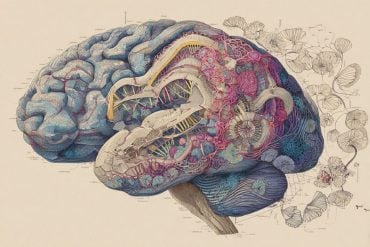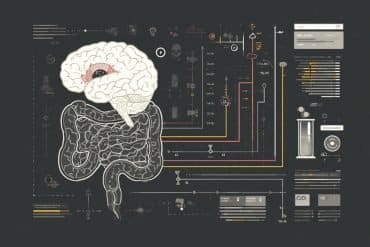Summary: The olfactory system works in combination with the brain’s reward and aversion systems in both learning and memory formation.
Source: RUB
Researchers studied how the processing of scents affects structures in the brain. They used electrical impulses to stimulate the olfactory bulbs of test animals. Then, they analysed the activity in the olfactory cortex, where olfactory stimuli are processed.
“We already knew that there is a connection between the olfactory bulb and the piriform cortex, a part of the olfactory cortex, in the perception of scents,” explains Dr. Christina Strauch, lead author of the study. “But our goal was to go deeper into the brain structures and find out which regions we had underestimated or overlooked until now.”
“So far, only a few studies on olfactory perception have analysed regions outside the olfactory bulb and olfactory cortex regions in rodents,” says Professor Denise Manahan-Vaughan, spokesperson of Collaborative Research Centre 874 Integration and Representation of Sensory Processes.
“It is still not completely understood how olfactory memories are formed. Our goal was to clarify to what extent brain structures that aren’t part of the olfactory system are involved in olfactory memory formation.”
Evidence of olfactory processing in the rodent brain
In their study, the researchers combined electrophysiological stimulation with functional magnetic resonance imaging (fMRI). Following this approach, the team obtained a detailed picture of the neuronal structures that responded to the stimulation of the olfactory bulb.
Highly responsive structures were then analysed in more depth using fluorescence in situ hybridisation analysis of neuronal gene expression. This technique helps researchers determine whether neurons do indeed store the olfactory stimulus: This event serves as evidence of memory formation.
Sure enough, stimulation of the olfactory bulb had led to altered gene activity. This happened even in the nerve cells of the limbic cortex – that is, in a functional unit attributed with the processing of emotions.

“The involvement of these non-olfactory structures probably plays a key role in the storage of olfactory experiences,” as Christina Strauch interprets the findings. “We deduce from this that rodents quickly categorise perceived scents as pleasant or unpleasant while smelling them.”
Overall, the results prove that the olfactory system works closely with the brain’s reward and aversion systems in both learning and memory formation.
“The study provides us an additional theoretical basis for understanding why the sense of smell plays such a unique role in the formation and retrieval of memories,” says Denise Manahan-Vaughan, who together with Christina Strauch has been exploring how memories are formed from scents since 2010.
About this olfaction research news
Author: Meike Driessen
Source: RUB
Contact: Meike Driessen – RUB
Image: The image is in the public domain
Original Research: Open access.
“Olfactory information storage engages subcortical and cortical brain regions that support valence determination” by Denise Manahan-Vaughan et al. Cerebral Cortex
Abstract
Olfactory information storage engages subcortical and cortical brain regions that support valence determination
The olfactory bulb (OB) delivers sensory information to the piriform cortex (PC) and other components of the olfactory system. OB-PC synapses have been reported to express short-lasting forms of synaptic plasticity, whereas long-term potentiation (LTP) of the anterior PC (aPC) occurs predominantly by activating inputs from the prefrontal cortex.
This suggests that brain regions outside the olfactory system may contribute to olfactory information processing and storage. Here, we compared functional magnetic resonance imaging BOLD responses triggered during 20 or 100 Hz stimulation of the OB.
We detected BOLD signal increases in the anterior olfactory nucleus (AON), PC and entorhinal cortex, nucleus accumbens, dorsal striatum, ventral diagonal band of Broca, prelimbic–infralimbic cortex (PrL-IL), dorsal medial prefrontal cortex, and basolateral amygdala. Significantly stronger BOLD responses occurred in the PrL-IL, PC, and AON during 100 Hz compared with 20 Hz OB stimulation. LTP in the aPC was concomitantly induced by 100 Hz stimulation.
Furthermore, 100 Hz stimulation triggered significant nuclear immediate early gene expression in aPC, AON, and PrL-IL. The involvement of the PrL-IL in this process is consistent with its putative involvement in modulating behavioral responses to odor experience.
Furthermore, these results indicate that OB-mediated information storage by the aPC is embedded in a connectome that supports valence evaluation.






